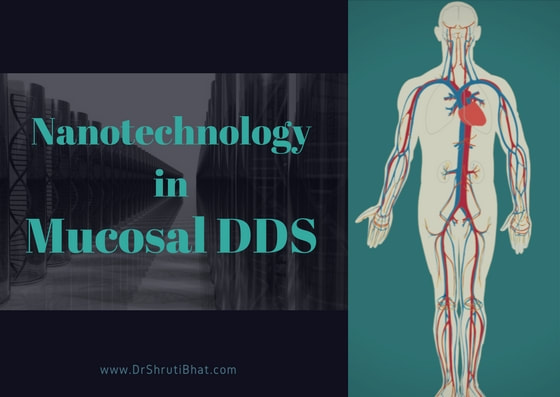On the horizon are nano particles made of biodegradable and biocompatible mesoporous silicon particles designed to efficiently carry therapeutic agents to their intended site by successfully penetrating the body's immune system. These multistage nanoparticle systems deliver therapeutic agents in a manner similar to a space rocket launching from Earth through our atmosphere, in that the multilayered nanoparticle disposes of its outer layer as it moves through the body. Each layer of the nanoparticle is designed to efficiently meet and overcome each physiologic barrier that it encounters as it moves through the body. As a result, the multistage nanoparticle drug delivery system is able to successfully carry therapeutic agents to the intended site with greater efficiency and reduce the need for a higher drug dose. As an added advantage, by successfully limiting drug side effects, it is hoped that greater patient drug adherence will result (Tasciotti, Liu, & Bhavane, 2008).
Nanoshells are another exciting development in drug delivery. These molecules are hollow silica spheres covered with silver, gold, or other metals that can be chemically equipped to carry antibodies. This technology allows the nanoshell to successfully attach to specific cells within the body and deliver their payload. By precisely delivering medication to the intended site, systemic side effects can be minimized (Leary et al., 2006). Drugs may also be encapsulated within the metal nanoshells. The healthcare provider of the future will have the ability to trigger the nanoshell with an external force to release its therapeutic agent at the precise time that it reaches its intended target within the body. Infrared light and magnetic fields are currently being explored as possible triggers. This drug delivery system is expected to be especially useful in the area of oncology for the treatment of tumors because high concentrations of therapeutic agents can be delivered to the tumor, and the toxic effects to surrounding tissues can be minimized (Yih & Al-Fandi, 2006; Hafeli, 2004).
Drug-loaded erythrocytes are another nanotechnology drug delivery system under development. Erythrocytes are split open and loaded with the desired therapeutic agent. Using nanotechnology, the surface of the erythrocyte is enhanced with glutaraldehyde, antibodies, or specific carbohydrates, which increase the erythrocytes' circulation half-life, allowing for body barrier penetration and precise drug delivery. Once delivered into the patient's body, the erythrocytes circulate in the blood and reticuloendothelial systems and slowly release the intended agent (Hirlekar, Patel, & Dand, 2008).
A vaccine carrier system using nanoemulsions is currently being researched. This medication delivery system uses nanotechnology to vaccinate against HIV. There is recent evidence that HIV can infect the mucosal immune system. Therefore, developing mucosal immunity through the use of nanoemulsions may become very important in the future fight against HIV (Bielinska, Janxzak, & Landers, 2008). The oil-based emulsion is administered in the nose, as opposed to traditional vaccine routes. Research is demonstrating that genital mucosa immunity may be attained with vaccines that are administered into the nasal mucosa.
Engineered nanotechnology molecules have demonstrated superior performance over present-day monovalent drug delivery systems that have only one site of attachment. A special architectural class of nano particles called dendrimers consists of a central core with many branches that allow molecules to attach to its surface (Morrow, Bawa, & Wei, 2007). Dendrimers in research have been fashioned into sophisticated anticancer machines carrying five chemical tools: one to bind to cancer cells, a second that will fluoresce upon locating genetic mutations, a third that assists in imaging the tumor shape with x-rays, another that carries drugs to be released on demand, and one that sends a signal when cancerous cells are dead (Nova Science Now, n.d.). Additionally, in the future, dendrimers may be used to place genes in cells. It is also hypothesized that nanotechnology could be used to design specially engineered cardiomyocytes to repair damaged hearts and erythrocytes capable of delivering much higher levels of oxygen to tissues (Morrow et al., 2007).
Precise therapy parameters in the future may be maintained with implantable drug delivery and biosensing microchips. These "intelligent" systems will provide real-time therapeutic monitoring and control the time, amount, rate, and location of drug delivery. The microchip devices will contain an array of individually sealed and actuated reservoirs. The passage of a threshold level of electric current through the device will cause it to disintegrate, exposing the drugs in the reservoir to the surrounding environment (Maloney, Uhland, & Polito, 2005).
In the area of neuroscience, biosensor technology is already being used to monitor glutamate levels at the surface of living cells to provide information on the neurological damage occurring in stroke and neurodegenerative disorders and to detect the early formation of amyloid-[beta] protein found in Alzheimer's disease. "Nanomachines that could move through the body troubleshooting and repairing tiny brain or cardiovascular lesions lie in the future" (Morrow et al, 2007).
Another system, the NanoStat platform technology enables both topical anti-infective products as well as a broad range of mucosal vaccines. The technology employs high-energy, oil-in-water emulsions that are manufactured at a size of 150-400 nanometers and are stabilized by surfactants. The unique aspect of products derived from the company's NanoStat technology is that, unlike currently available therapies, NanoBio's treatments are selectively toxic to microbes while non-irritating to skin and mucous membranes. The NanoStat technology also enables a platform of nanoemulsion based mucosal vaccines. When either whole virus or a recombinant protein antigen is simply mixed with nanoemulsion and placed on the naso-pharynx, the nanoemulsion serves as a potent adjuvant, producing both mucosal immunity and systemic.
Nanotechnology is not yet here for daily use, other new methods of drug delivery continue to come to market, such as intranasal medications, pain balls, pulmonary delivery, trans-git etc.





















